A beam consisting of red, blue and yellow colours is incident normally on the face AB of an isosceles right angled prism ABC as shown in Fig. 6.5. Complete the diagram to show the refracted and the emergent rays. Given that the critical angle of glass-air interface for yellow colour is 45∘
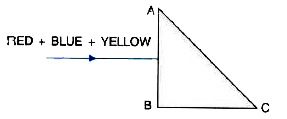
The completed diagram is shown in Fig. 6.6. The beam is incident normally (∠i=0∘) on the face AB so it passes without deviation (∠r=0∘) for all colours and with no dispersion. Now the refracted beam inside the prism, strikes the face AC at an angle of incidence equal to 45∘. Since the critical angle for yellow colour at the glass-air interface is 45∘, so the yellow colour suffers refraction along the face AC of the prism (∠r=90∘).
The critical angle for the light of red colour will be more than 45∘
(sincesinC=1μandμr<μy), so the light of red colour is incident on the face AC at an angle less than the critical angle for red colour. The red colour is, therefore, refracted out of the prism obeying the laws of refraction, i.e., it bends away from the normal at the face AC so the emergent ray bends towards the base of the prism.

Now the critical angle for the light of blue colour will be less than 45∘ since μB>μY so the light of blue colour is incident on the glass-air surface AC at an angle of incidence greater than the critical angle for blue colour. Therefore, the light of blue colour suffers total internal reflection and strikes normally on the base BC of the prism. It then emerges out of the prism without deviation. Thus blue colour emerges out of the prism at right angle to its incident direction.
Topper's Solved these Questions
- SPECTRUMBOOK - ICSECHAPTER - SPECTRUMEXERCISE - EXERCISE A
40 Videos
- SPECTRUMBOOK - ICSECHAPTER - SPECTRUMEXERCISE - EXERCISE A (MULTIPLE CHOICE TYPE)
6 Videos
- SPECIMEN QUESTION PAPERBOOK - ICSECHAPTER - SPECIMEN QUESTION PAPEREXERCISE - QUESTIONS
33 Videos
- WORK,POWER AND ENERGY BOOK - ICSECHAPTER - WORK,POWER AND ENERGY EXERCISE - DIAGRAM BASED MCQ
3 Videos
Similar Questions
A ray of light incident normally on an isosceles right angled prism travels as shown in the figure. The least value of the refractive index of the prism must be
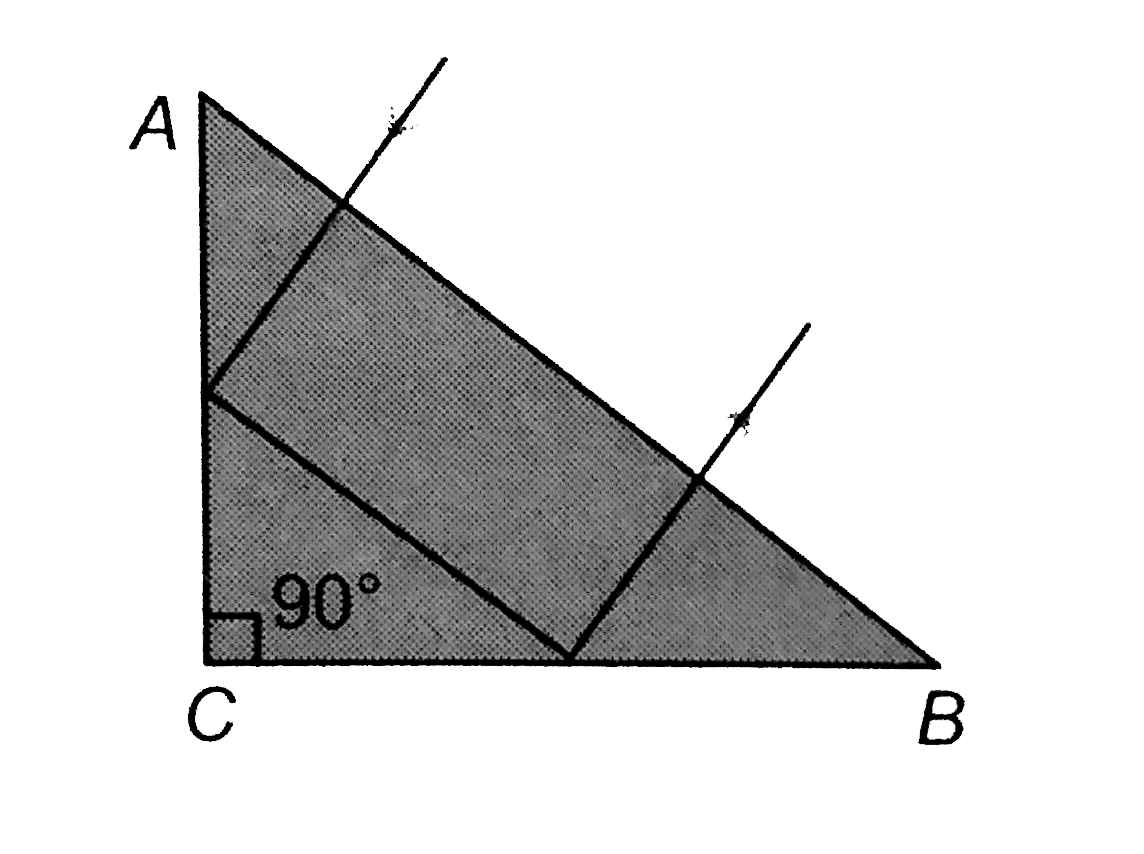
View SolutionA ray of light PQ is incident normally on the hypotenuse of a right angled prism ABC as shown in the diagram given below:
What is the value of the angle of deviation of the ray ?
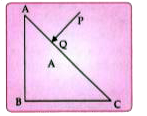
View SolutionComplete the ray diagram shown below, given that the critical angle. for air-glass pair is ic=42∘
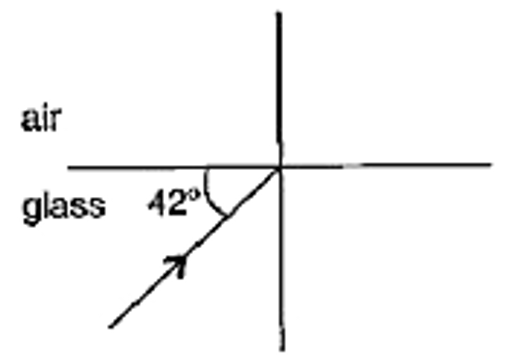
View SolutionA light ray is incident normally on the face AB of a right-angled prism ABC(μ==1.50) as shown in figure. What is the largest angle ϕ for which the light ray is totally reflected at the surface AC ?

View SolutionA ray of light PQ is incident normally on the hypotenuse of a right angled prism ABC as shown in the diagram.
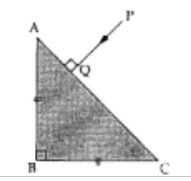
Name an instrument where this action of the prism is used.
View SolutionA ray of light PQ is incident normally on the hypotenuse of a right angled prism ABC as shown in the diagram given below:
Copy the diagram and complete the path of the ray PQ till it emerges from the prism.
View SolutionA ray of light PQ is incident normally on the hypotenuse of a right angled prism ABC as shown in the diagram given below:
Name an instrument where this action of the prism is used.
View SolutionTwo monochromatic ray of light are incident normally on the face AB of an isosceles right - angled 'I' and '2' are respectively 1.35 and 1.45. Trace path of these rays after entering through the prism.
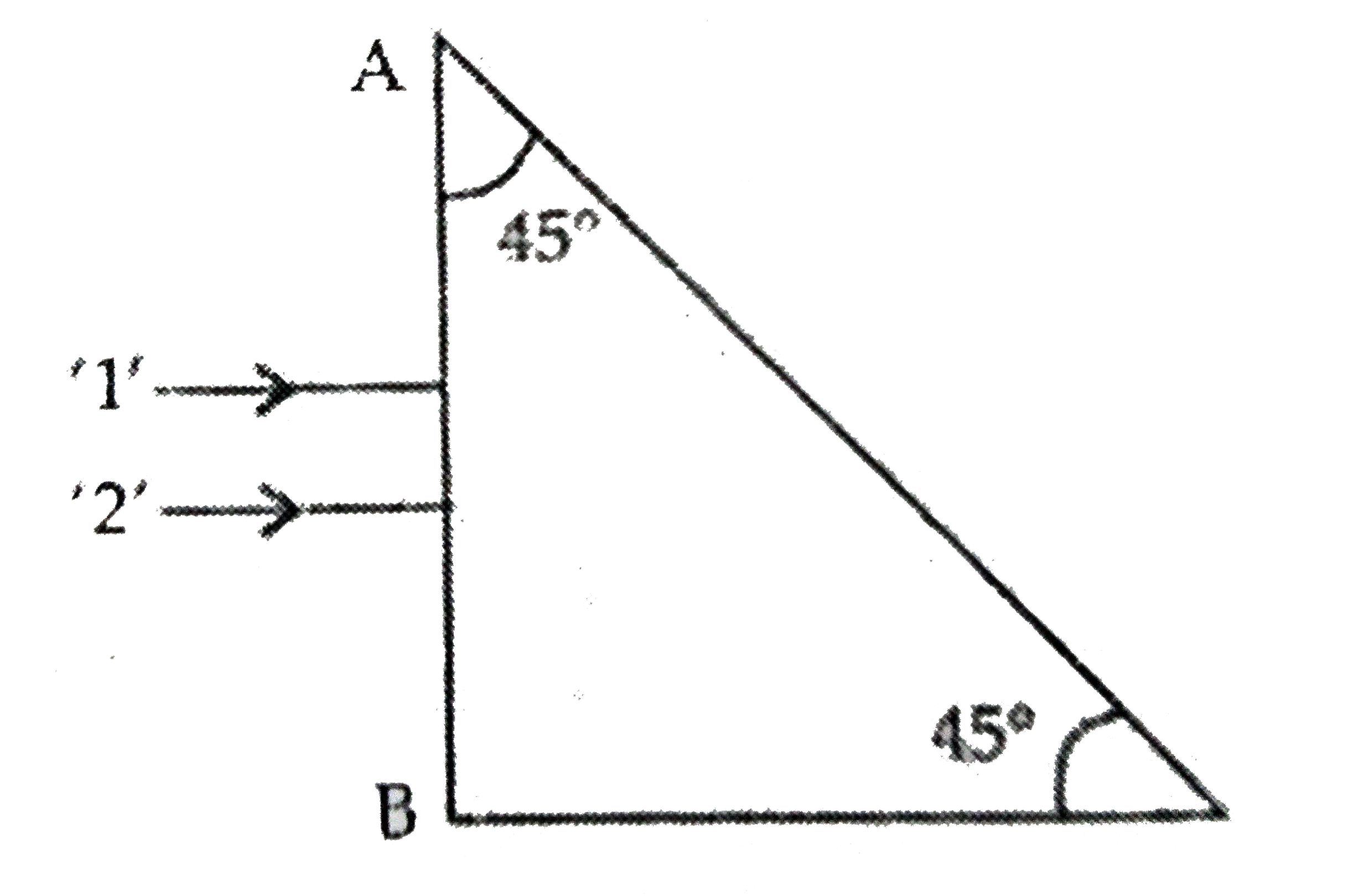
View SolutionComplete the path of the ray AB through the glass prism in PQR till it emerges out of the prism. Given the critical angle of the glass as 42∘.

View SolutionA ray of light LM incident normally on the surface AC of an isosceles right angled prism ABC (where AB=BC) emerges along PQ, parallel to LM, as shown in given figure. What can you say about refractive index μ of the material of the prism ?
View Solution
